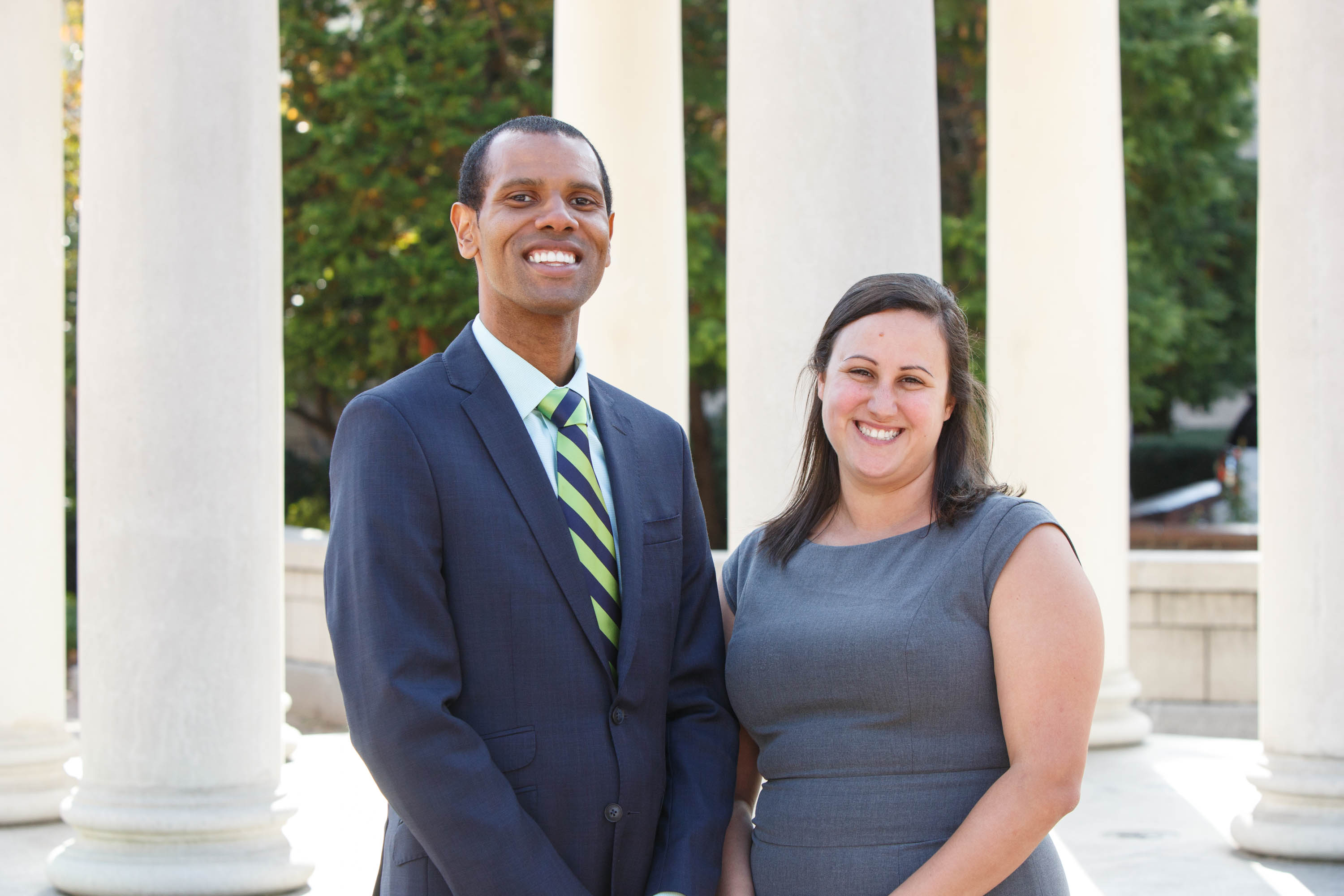By Ruth Steinhardt
The George Washington University has established an Enrollment Retention Office to develop strategies to further enhance retention and graduation for undergraduate students. Oliver Street, executive director of enrollment retention, joined enrollment retention officer Lindsay Peck at GW in August.
The office is “dedicated to bringing academic and administrative units, as well as administrators, faculty, staff and students together to ensure that those who matriculate succeed,” said Laurie Koehler, vice provost for enrollment management and retention.
To that end, Mr. Street and his team will coordinate existing retention efforts across the schools. The Enrollment Retention Office will facilitate communication between academic advisers, financial aid administrators, faculty and other members of the GW community to ensure that the best possible institutional structures and support systems are in place to enhance the student experience.
“Our role is not to be the single office that deals with all these issues,” Mr. Street said. “The real way to scale [retention efforts] is a ‘train the trainer’ model—training and deploying collaborators in individual schools and departments who can work with students.”
As an example, Mr. Street remembered his own time as assistant dean at West Virginia University Reed College of Media. There he counseled one student who turned a 0.5 grade point average into several semesters of 4.0s and eventually was able to graduate.
“Investing in students and being committed to their success illustrates the importance of every interaction,” Mr. Street said. “There was nothing special about me. Every person at an institution has the ability to have that impact.”
Under President Steven Knapp’s leadership, GW established a test-optional admissions policy that has resulted in a 29 percent rise in applications. The university also launched the District Scholars Award, a grant that will expand access to high-achieving District of Columbia high school students from families making less than $75,000 a year, and formed partnerships with the Posse Foundation and Say Yes to Education.
One of the Enrollment Retention Office’s initial goals will be to use available retention data to identify what combinations of factors contribute to students succeeding both socially and academically. It will then bring together administrative and academic units to share these findings and collaborate to identify opportunities for ensuring positive outcomes for all students.
“The Center for Student Engagement has been focused on the success of our students and helping them find their niche at GW,” said Associate Dean of Students Tim Miller. “The retention office has become an invaluable partner in helping ensure our students are successful and accomplish their dreams through the achievement of earning their degree.”
Some faculty members have already approached collaborations with the office. Murli Gupta, professor of mathematics in the Columbian College of Arts and Sciences, will launch a pilot program in the spring to help students get the extra support they may need before taking course entrance exams.
“We know that calculus courses are some of the first courses that students take when they’re going for science or STEM careers…[but] our calculus and pre-calculus courses have high drop-fail-withdraw rates,” Dr. Gupta said. “We want to reduce that.”
Most of all, Mr. Street said, he and his team want to hear from people “on the ground”: faculty, administrators and students.
“We want to get student voices, whether through surveys, interviews or focus groups,” he said. “We particularly want to hear from students who have not performed at the level that indicators say they should have to find out what’s contributed to that. Student success is the main goal.”


